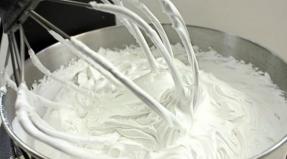Sirdalud instructions for use from what helps. Sirdalud tablets: instructions for use, dosage, contraindications. Medicinal combinations: important nuances
- Latin name: Sirdalud
- ATX code: M03BX02
- Active substance: Tizanidine hydrochloride
- Manufacturer: NOVARTIS Saglik Gida ve Tarim Urunlery Sanayi ve Ticaret, A.S., Turkey
Composition
Depending on the form of release, 1 tablet of Sirdalud contains 4 mg or 2 mg tizanidine ... Also, the composition contains auxiliary substances:
- MCC ;
- lactose monohydrate ;
- stearic acid ;
- silicon dioxide anhydrous colloidal .
Release form
The package contains 30 tablets of 2 and 4 mg each, the blister itself contains 10 tablets, and the package contains 3 blisters.
2 mg tablets: white, flat, round, line on one side, “OZ” code on the other.
4 mg tablets: white, flat, round, on one side the inscription "RL", on the other - crossing lines.
pharmachologic effect
Is a muscle relaxant central action.
Pharmacodynamics and pharmacokinetics
Tizanidine is a skeletal muscle relaxant, its main site of action is spinal cord... This drug reduces increased skeletal muscle tone, relieves spasm, increases the strength of voluntary contractions... Sirdalud is effective for chronic spasticity cerebral and spinal genesis and at acute muscle spasm... In addition, it provides lightweight analgesic effect.
Tizanidine is absorbed rather quickly and practically completely. The highest indicator of the level of concentration of the drug in plasma can be observed about an hour after taking it. The substance is excreted by the kidneys.
Indications for use of Sirdalud
What are Sirdalud tablets from? The indications for use are as follows:
- muscle spasm which is associated with diseases of the spine (these include lumbar and cervical syndromes ), or which appeared after the intervention of the surgeon;
- skeletal muscle spasticity at manifestation neurological diseases (multiple sclerosis , chronic , child cerebral paralysis , degenerative diseases of the spinal cord ).
Contraindications
This medication has a number of known contraindications:
- individual intolerance to the component present in the preparation;
- significant liver dysfunctions;
- children and adolescents under the age of 18.
With extreme caution, it is necessary to take the drug to patients whose age over 65 years old as well as patients with impaired renal function.
Side effects
Side effects of Sirdalud include:
- , sleep disturbances , ;
- bradycardia , ;
- upset stomach , nausea , dry mouth ;
- increased fatigue , ;
- increased activity hepatic transaminases .
As a result of abrupt cessation of taking Sirdalud after a long period of treatment, , an increase in pressure, which can lead to impaired blood circulation in the brain, so the dose of the drug should be reduced gradually, up to its complete cancellation.
As a result clinical research the following adverse events were identified, the frequency of which was not identified:
- confusion , , vertigo ;
- blurred vision ;
- liver failure , hepatitis ;
- withdrawal syndrome , asthenia .
Instructions for use of Sirdalud (Way and dosage)
The medicine is taken orally, the dose is determined based on the individual characteristics of the human body. To minimize the risk of manifestation side effects you should start with a dose - 1 tablet (2 mg) or half a tablet (4 mg) 3 times a day.
At severe muscle spasm tablets of 2 mg or 4 mg are prescribed 3 times a day. In severe cases, you can take an additional dose of 2 mg or 4 mg before bedtime.
On manifestation skeletal muscle spasticity , which can be caused by neurological diseases, the initial dose is 6 mg per day, taken in 3 divided doses. It is necessary to increase the dose gradually, by 2-4 mg, in the interval from 3 to 7 days. The optimal effect is achieved when taking 12-24 mg per day, 3-4 times a day. Do not take a dose higher than 36 mg per day.
Patients with impaired renal function it is necessary to start the course of treatment with a dose of 2 mg per day at a time. The dose is increased gradually, in small steps, taking into account the effectiveness and tolerability of the drug.
Instructions for use of the drug Sirdalud MR
The drug is a capsule containing 6 mg. The initial dose of Sirdalud is 1 capsule per day. The dose can be gradually increased by 6 mg at intervals of 3 to 7 days. For most patients, the optimal dose is 12 mg per day. In rare cases, the dose can be increased to 24 mg (4 capsules) per day.
Injections of this drug can only be prescribed by a doctor.
Overdose
An overdose of Sirdalud Tinazidine can be expressed as follows:
- lowering blood pressure ;
- vomit , nausea ;
- drowsiness , dizziness , anxiety , miosis ;
- , breathing disorder .
Treatment: repeated use and forced diuresis accelerate the elimination of the drug from the body. After removal, carry out symptomatic treatment.
Interaction
Simultaneous consumption of medication with inhibitors of cytochrome CYP1A2 leads to an increase in plasma tizanidine levels, which in turn leads to overdose symptoms. Simultaneous consumption of Sirdalud with inducers of CYP1A2 leads to a decrease in the level of tizanidine, which causes a decrease medicinal properties drug.
It is contraindicated to use Sirdalud together with ,. The result of simultaneous use can be a significant decrease in blood pressure, which is accompanied by dizziness and drowsiness, in some cases - loss of consciousness.
It is not recommended to take the medicine with antiarrhythmic drugs(such as , mexiletine , amiodarone ), some fluoroquinolones ( , enoxacin , perfloxacin ), cimetidine , ticlopidine , , rofecoxib .
With caution, it is necessary to take Sirdalud with those drugs that prolong the QT interval ( , and etc.).
The use of Sirdalurd together with reduces the content of tizanidine in plasma and, accordingly, reduces healing effect from the use of the drug.
Treatment with the drug in male smokers may require an increase in dose. Drinking alcohol should be avoided as the medication may increase bad influence alcohol on the central nervous system. The sedative effect of Sirdalud can be enhanced by hypnotics, sedatives and antihistamines.
Terms of sale
The medicine is available with a prescription.
Storage conditions
Store at a temperature not exceeding 25 ° C, out of the reach of children.
Shelf life
The shelf life is 3 years.
special instructions
The drug is not recommended for patients with galactose intolerance , as well as suffering from a severe form inadequacies lactase or glucose / galactose malabsorption , due to the presence of lactose in the composition.
Since one of the side effects of the drug is drowsiness , it is highly recommended to refrain from driving a car or performing work related to mechanisms or machines.
Sirdalud's analogs
Matching ATX level 4 code:It is an analogue of Sirdalud in terms of release form and composition. Also in terms of composition, Mydocalm is an analogue, which is available both in film-coated tablets and in the form of a solution for injection.
The price for Sirdalud analogues: Tizalud costs from 55 to 72 UAH; depending on the form of release - from 67 to 98 UAH.
Mydocalm or Sirdalud: which is better?
Sirdalud is more modern drug having dosage form, allowing you to take it once a day, while Mydocalm is more studied by doctors, has broader indications for use. The side effects of both drugs are similar.
Reviews for Sirdalud
Reviews for Sirdalurd tablets are left by patients of different ages. The average score on the forums for this drug is 3.9 points out of 5. Many patients report the occurrence of side effects such as drowsiness and fatigue. There are also reports of the effect of the medication on the liver.
Reviews of doctors about Sirdalud: the drug is used for symptomatic treatment, it allows you to reduce skeletal muscle spasms. With a strong manifestation of side effects or no result for 3 days of taking the medication, you should contact your doctor in order to adjust the therapy regimen.
Price for Sirdalud
The price for 2 mg tablets is 80 UAH on average, the price for 4 mg is 120 UAH.
The cost in Russia of such tablets is respectively 220 rubles. and 360 rubles.
- Online pharmacies in Russia Russia
- Online pharmacies of Ukraine Ukraine
- Internet pharmacies in Kazakhstan Kazakhstan
ZdravCity
Sirdalud tab. 2mg n30 Novartis Urunleri
Sirdalud mr caps. with mod. release 6mg n30Novartis Saglik Gida ve Tarim Yuryunleri Sanayi ve Tikaret A.S.
Sirdalud is a drug belonging to the group of centrally acting muscle relaxants. The main indication of Sirdalud is muscle spasms. different etiology... The drug is available in the form of modified release hard gelatin capsules. Its active ingredient is tizanidine.
In this article, we will consider why doctors prescribe Sirdalud, including instructions for use, analogs and prices for it medicine in pharmacies. Real REVIEWS of people who have already used Cirdalud can be read in the comments.
Composition and form of release
Clinical and pharmacological group: Muscle relaxant of central action.
- 1 tablet contains 2 mg or 4 mg of tizanidine in the form of hydrochloride (active substance), as well as inactive ingredients: anhydrous colloidal silicon dioxide, stearic acid, microcrystalline cellulose, anhydrous lactose.
The package contains 30 tablets of 2 and 4 mg each, the blister itself contains 10 tablets, and the package contains 3 blisters.
What is Sirdalud used for?
The remedy is used for pain due to muscle spasm, which manifests itself in diseases of the spine, in particular, osteochondrosis of the lumbar, cervical and thoracic spine. The medicine is indicated after surgery, it is used for various diseases in the field of neurology.
- Painful muscle spasm caused by functional and static diseases of the spine (lumbar and cervical syndromes), surgery (for example, for osteoarthritis of the hip joint or herniated disc);
- Skeletal muscle spasms in neurological diseases, for example, in degenerative diseases of the spinal cord, chronic myelopathy, multiple sclerosis, the consequences of cerebral palsy and cerebral circulation disorders.

pharmachologic effect
Muscle relaxant of central action.
- Sirdalud is effective both for acute painful muscle spasm and for chronic spasticity of spinal and cerebral origin. It reduces resistance to passive movements, reduces spasms and clonic seizures, and increases the strength of voluntary skeletal muscle contractions.
- Tizanidine is a centrally acting skeletal muscle relaxant. The main point of application of its action is in the spinal cord. By stimulating presynaptic alpha receptors, it inhibits the release of excitatory amino acids that stimulate N-methyl-O-aspartate receptors (NMDA receptors). As a result, polysynaptic transmission of excitation is suppressed at the level of intermediate neurons of the spinal cord. Since it is this mechanism that is responsible for excess muscle tone, when it is suppressed, muscle tone decreases. In addition to muscle relaxant properties, tizanidine also has a central, moderate analgesic effect.
Instructions for use
For those who use Sirdalud, the instructions for use informs what is taken this drug inside, the dose is determined based on the individual characteristics of the human body. To minimize the risk of side effects, you should start with a dose of 1 tablet (2 mg) or half a tablet (4 mg) 3 times a day.
- For painful muscle spasm, it is usually prescribed 2 mg or 4 mg 3 times / day. In severe cases, an additional 2 mg or 4 mg can be taken (preferably at bedtime due to possible increased drowsiness).
- Spasticity of skeletal muscles due to neurological diseases: the initial dose is no more than 6 mg per day in three divided doses, then the dose is gradually increased by 2–4 mg every 3–7 days. Optimal therapeutic effect was observed at a daily dose of 12-24 mg in 3-4 doses at regular intervals. The maximum dose is 36 mg per day.
The experience of using the drug Sirdalud in patients aged 65 years and older is limited. It is recommended to start therapy with a minimum dose with a gradual increase until the optimal balance of tolerance and effectiveness of therapy is achieved.
The use of the drug Sirdalud in patients with severely impaired liver function is contraindicated. In patients with moderately severe liver dysfunction, the drug should be used with caution. Treatment of patients with renal failure(CC less than 25 ml / min) it is recommended to start with a dose of 2 mg 1 time / day.
Contraindications
According to the instructions, Sirdalud and tizanidine-based drug analogues are contraindicated in:
- hypersensitivity to tizanidine or any other component of the drug;
- pregnancy and breastfeeding;
- severe liver dysfunction;
- while taking strong inhibitors of cytochrome P450 1A2 (Ciprofloxacin, Fluvoxamine and other drugs in this group).
The instructions for Sirdalud indicate that the drug should be prescribed with caution to patients over 65 years of age, as well as to patients with impaired renal function or moderate impaired liver function.
Side effects
When using the drug in a small dosage, the following side effects may develop:
Rarely enough:
- Violations digestive system(nausea, stool disorders, impaired liver enzyme activity).
More often:
- Violations nervous system(drowsiness, dizziness, general weakness);
- Violations of cardio-vascular system(lowering blood pressure);
- Digestive system disorders (dry mouth).
When taking the drug at a higher dosage:
- Violations of the cardiovascular system (lowering blood pressure, heart rhythm disturbances);
- Nervous system disorders (various sleep disorders, hallucinations, muscle weakness);
- Digestive system disorders (acute inflammation of the liver).
All of these symptoms are rare. Their appearance is not a good enough reason to discontinue the drug.

Pregnancy and lactation
Since no controlled studies have been conducted on the use of tizanidine in pregnant women, it should not be used during pregnancy unless the potential benefit outweighs the potential risk. Sirdalud should not be used during lactation ( breastfeeding), because there is no data on the penetration of tizanidine into breast milk.
Prices
The average price of SIRDALUD in pharmacies (Moscow) is 215 rubles.
Analogs
Sirdalud has analogues that are similar in their pharmacological properties and the effect on the patient's body. Drug analogues:
- Tizalud;
- Tizanidine;
- Tizanyl;
- Tizanidine hydrochloride;
- Midocalm.
Data medications are prescribed for painful muscle spasm, after surgery for a hernia and intervertebral discs, with spasticity of skeletal muscles, disorders of cerebral circulation, diseases of the spinal cord, cerebral palsy.
Active ingredient Sirdaluda is tizanidine. Tizanidine- a muscle relaxant of central action that affects skeletal muscles. The main site of application of the mechanism of action of Sirdalud is the presynaptic α2 -receptors of the spinal cord. As a result of the action of tizanidine, the presynaptic α2 -receptors are stimulated with a further inhibition of the production of excitatory amino acids that stimulate the NMDA receptors (receptors for N-methyl-D-aspartate). Due to this, there is a suppression at the level of intermediate spinal neurons of the transmission of excitation by the polysynaptic pathway. Since this pathway of transmission of excitation is the main one in the etiology of increased muscle tone, then under the action Sirdaluda it goes down.
Tizanidine also has a moderate central analgesic effect. The drug is used for chronic and acute spastic diseases of cerebral and spinal genesis. Sirdalud reduces clonic convulsions and spasms, as well as increases the strength of voluntary contractions of skeletal muscles.
Tizanidine is absorbed almost completely and quickly. Cmax in blood plasma is observed approximately 60 minutes after ingestion Sirdaluda... The average bioavailability due to pronounced metabolism and primary passage through the liver is approximately 34%.
At intravenous administration the drug during the equilibrium state average the volume of distribution is 2.6 l / kg of body weight. thirty% active substance are bound by plasma proteins. The linear nature of the pharmacokinetics of tizanidine is observed in the dose range from 4 mg to 20 mg. Given the very small interindividual variability of pharmacokinetic data (AUC and maximum plasma concentration), it is possible to predict the concentration of the active substance in the blood plasma in patients who take Sirdalud inside. Gender does not alter the pharmacokinetics of tizanidine.
The drug metabolites are inactive. Metabolism occurs predominantly in the liver. The half-life is on average 2-4 hours. Elimination - by the kidneys (approximately 70% of the administered dose) in the form of metabolites. An insignificant part of tizanidine is excreted unchanged (2.7%).
In renal failure with creatinine clearance less than 25 ml / min, there is a 2-fold increase in the average maximum plasma concentration (compared with healthy volunteers). There is also an extension of the terminal half-life to 14 hours, due to which the AUC increases by 6 times (on average).
Does not affect the pharmacokinetics of tizanidine, food intake simultaneously with the drug intake. However, at the same time, there is an increase in the maximum concentration in the blood plasma of tizanidine. It is believed that such an increase has no clinical significance. Food intake also has no effect on AUC (absorption).
Indications for use
Skeletal muscle spasm caused by neurological pathology (multiple sclerosis, degenerative diseases of the spinal cord, cerebral palsy, chronic myelopathy, cerebrovascular accident, etc.).Painful muscle spasm:
With functional and static diseases of the spine (radicular, cervical syndrome);
v postoperative period after surgical interventions (for example, after surgery for osteoarthritis of the hip joint, intervertebral hernia).
Mode of application
Skeletal muscle spasm due to neurologic pathologyThe dosage is selected by the doctor individually, depending on the clinical picture and the patient's response to the drug. The initial dose should not exceed 6 mg / day. The dose is divided into 3 doses of the drug. With an interval of 3-7 days, the dosage can be increased by 2-4 mg. The optimal therapeutic dose is usually a dose of 12-24 mg / day (divided into 3-4 doses at the same time interval). It is not recommended to exceed a dosage over 36 mg / day.
Painful muscle spasm
Sirdalud apply 2-4 mg 3 r / day. With severe spasm, it is allowed to take another 2-4 mg of the drug before bedtime.
For elderly patients
Based on pharmacokinetic parameters, it can be assumed that the renal clearance of the drug in the elderly may be very slow. The use of the drug is allowed only under close medical supervision. Clinical experience application Sirdaluda for this category of persons is limited.
With renal failure
The starting dose for patients with renal insufficiency and creatinine clearance less than 25 ml / min is 2 mg / day at a time. You can gradually increase the dosage of the drug, taking into account the effectiveness and tolerability. Usually, to obtain a stronger therapeutic effect, the dose is first increased, which should be taken once a day; in case of good tolerance, the frequency of administration is also increased.
Side effects
When Sirdalud is taken in low doses for the treatment of painful muscle spasm, side effects are usually rare, mild and transient.Rare (≥ 0.01 to ≤ 0.1%): gastrointestinal disturbances, nausea, increased activity of hepatic transaminases, transient.
Frequent effects (≥1 to ≤10%): weakness, drowsiness, mild hypotension, dizziness, dryness of the oral mucosa.
In the case of the appointment of higher dosages of Sirdalud (in the treatment of spasticity), side effects may be more pronounced and develop more often, which is not an indication for discontinuation of the drug.
Frequent effects (≥1 to ≤10%): bradycardia, arterial hypotension.
Rare (≥ 0.01 to ≤ 0.1%): sleep disorders, muscle weakness, insomnia, hallucinations.
Very rare (≤0.01%): acute hepatitis.
Contraindications
Severe violations of hepatic functions;increased individual sensitivity to tizanidine or another component of Ciralud;
a combination of fluvoxamine with tizanidine.
Pregnancy
Animal studies (rabbits and rats) did not reveal a teratogenic effect on the fetus. However, no controlled studies have been conducted use of Sirdalud in pregnant women and nursing mothers. Sirdalud is not recommended for pregnant women, except in cases where the benefits of using the drug exceed possible risk actions on the fetus (newborn). Experiments on animals have shown that small amounts of tizanidine pass into breast milk, therefore, the appointment of nursing mothers is not recommended.Interaction with other medicinal products
Cannot be assigned Sirdalud patients taking CYP1 A2 inhibitors and fluvoxamine.Caution is needed in case of combination with other CYP1 A2 inhibitors (amiodarone, propafenone, mexiletine, cimetidine, pefloxacin, enoxacin, ciprofloxacin, norfloxacin, oral hormonal contraceptives, rofecoxib and ticlopidine). In this case, dizziness, decreased ability to psychomotor work, dizziness are possible.
With the simultaneous use of antihypertensive drugs (and / or diuretics) and Sirdalud, bradycardia and arterial hypotension are possible.
Potential sedative action Sirdaluda sedatives and alcohol.
Overdose
There are several overdose reports Sirdaluda, including cases of taking the drug at a dose of 400 mg. All patients have recovered. Overdose signs: nausea, arterial hypotension, vomiting, dizziness, anxiety, miosis, respiratory failure, drowsiness, coma.Treatment: the appointment of enterosorbents (activated carbon) repeatedly, symptomatic treatment, forced diuresis is effective.
Release form
Tablets, 2; 4 mg. The blister contains 30 tablets.Storage conditions
At room temperature in a place away from children.Composition
Active ingredient: tizanidine.Inactive components: anhydrous colloidal silicon dioxide, stearic acid, microcrystalline cellulose, anhydrous lactose.
Additionally
Hepatic dysfunctions associated with the intake of tizangidine have been described, which have rarely occurred at doses up to 12 mg / day. Therefore, it is recommended to monitor liver parameters once every 30 days during the first 4 months of admission. Sirdaluda those patients who take it in a dosage greater than 12 mg / day. It is also necessary to monitor hepatic parameters when joining symptoms that may indicate impaired liver function (unexplained nausea, fatigue, loss of appetite). If there is a persistent increase in transaminases (AST, ALT) 3 times or higher, the drug is stopped.Patients who notice drowsiness while taking Sirdalud should refrain from work that is associated with the need for a good reaction and high concentration attention.
main parameters
| Name: | SIRDALUD |
| ATX code: | M03BX02 - |
For some diseases muscular system only relaxing pills can help relieve pain. For example, Sirdalud is one of these drugs, it is indicated for painful spasms in the body.
Description of the medicine
Sirdalud belongs to the central muscle relaxants. These prescription pills cost 230 rubles for 30 pieces in the minimum dose. Sirdalud is produced by Novartis in Turkey. The working substance is tizanidine, its dose is 2 or 4 mg. The tablets are white, the edges are beveled, there is a risk and a special OZ code.
In addition to tizanidine hydrochloride, the product also includes additional ingredients - silicon dioxide, cellulose, lactose and others.
The drug works in a similar way to other muscle relaxants.

It affects mainly spinal neurons. The mechanism of action is to stimulate specific receptors, as a result, the release of excitatory amino acids is inhibited. As a consequence, suppression of the excitation wave is noted. This affects the muscle tone - the latter begins to decline. The severity of the muscle relaxant effect directly depends on the dose (on the concentration of tizanidine in the blood).

Testimony of Sirdalud
The medicine is prescribed for pathologies that cause painful spasms. As a rule, the indications are spastic contractions caused by functional diseases of the spinal column:

The drug has found application after injuries or operations on muscles, joints, spine, especially on the hip joint, or after removal of a herniated disc. These indications are due to the presence of an analgesic effect, coupled with muscle relaxant and with the removal of acute painful muscle spasms.
The medicine is also indicated for chronic spasticity of skeletal muscles, which is characteristic of a number of neurological diseases (with lesions of the spinal cord, brain). Against the background of a decrease in the frequency of spasms and clonic seizures, resistance to passive movements is minimized, and active movements increase. Therefore, Sirdalud is indicated for myelopathies, multiple sclerosis, cerebral palsy (used already in adulthood), after strokes and other disorders of cerebral circulation.
Contraindications medication
Do not take the drug in case of intolerance to the components, if hypersensitivity reactions have occurred during treatment. It should be taken into account that the composition contains lactose, therefore the tablets are contraindicated in case of a deficiency of the lactase enzyme in the body. Other prohibitions on the use are as follows:

During pregnancy, Sirdalud tablets help against muscle spasms, which often occur in the last stages in the presence of diseases of the musculoskeletal system. But, since detailed studies on the effect of tizanidine on the fetus have not been carried out, treatment is possible only for health reasons, when the benefit outweighs the potential risk. In other cases, it is better to refuse therapy with Sirdalud. During lactation, treatment also cannot be carried out, active and additional substances can penetrate into breast milk.
Carefully prescribe the remedy to persons over 65, it is possible that some side effects may increase.
In patients with kidney problems, if organ function is impaired, the concentration of tizanidine can be almost 2 times higher than that of healthy people... The period of excretion of metabolites also increases. This necessitates careful intake and dosage adjustment.

Instructions for use
How much, how and when to use the drug? The choice of dosage is carried out only by the doctor very carefully, since it completely depends on the type of disease, its severity, the state of health of the kidneys, the human liver. When Sirdalud is taken after a meal, the maximum concentration in the blood increases by 30%, although experts consider this indicator to be insignificant.
The initial dose is usually 2 mg of the drug three times / day, this will help to understand the tolerance and identify possible side effects.
The medicine is drunk with water in sufficient quantity, the intake does not depend on food. As a rule, 3 doses are taken per day, but in addition, you can drink another 2-4 mg of the drug, if pain, spasms occur in a pronounced degree.

It is best to take an extra pill before bed, as drowsiness from the higher dosage is possible. On the contrary, with a good therapeutic effect, the dose can be divided in half (there is a risk on the tablets, you can drink 1 mg three times / day).
- initial maximum dose for neurological diseases - 6 mg / day;
- after 3-7 days, the dose can be gradually increased by 2-4 mg;
- a dosage of 12-24 mg / day is possible, which gives a strong muscle relaxant effect;
- be sure to take pills at regular intervals;
- the highest dose is 36 mg / day.
In case of kidney failure, start taking at 2 mg / day. They drink Sirdalud once a day, increase the dose only when urgently needed.
Side effects
This drug helps with various cramps and pains, but has many side effects. Most often, neurological symptoms occur, because the drug acts on the central nervous system:

Perhaps a decrease in the frequency of heartbeat up to bradycardia, pressure may drop, if the dose is exceeded - until loss of consciousness, collapse. Digestion is also often disturbed - there are abdominal pains, dyspepsia, nausea. Due to the muscle relaxant effect, there is a risk of muscle weakness. Due to the peculiarities of excretion of metabolites, an increase in AST, ALT of the liver is often noted, sometimes drug-induced hepatitis occurs. Usually, all these reactions go away on their own after the drug is canceled and are not severe. If the doses of Sirdalud are high, side effects can be pronounced, but the cancellation of therapy is usually not required.

Analogues and other information
Among the analogs, it is more often noted. When choosing, patients are interested in which is better - Sirdalud or Midocalm. The mechanism of action of drugs is similar, but the working substances are not the same, so you cannot replace them yourself. Mydocalm is considered a more modern remedy, although the frequency of side effects from taking it is also high. Here are the analogues of Sirdalud:

Abrupt cancellation of the funds should not be allowed. There is a risk of so-called rebound hypertension, tachycardia, therefore, when therapy is discontinued, the dosage is reduced gradually. This is especially true when taking a high dose for a long time. If you do not follow this recommendation, there is a danger of cerebrovascular accident.
A similar effect of Sirdalud is achieved solely due to the activity of its active substance, which is tizanidine. It directly affects the spinal cord, preventing the release of amino acids responsible for the formation of hypertonicity.
In addition, Sirdalud has analgesic properties, since it eliminates pain syndrome varying degrees intensity. It reduces spasms and cramps, and also changes the pattern of voluntary muscle contractions in the skeleton. It is well absorbed from the gastrointestinal tract, and reaches its maximum plasma concentration one hour after consumption. It breaks down in the liver and is partially excreted in the urine, while the other part is excreted unchanged.
Sirdalud is produced exclusively in the fort of tablets, and of its analogues, Tizalud and Tizanidine are known, which are also widely used in medical practice for their intended purpose.
Indications and contraindications of the drug Sirdalud
Sirdalud is used for hypertonicity of skeletal muscles caused by pathologies of the spine; after operable interventions on the hip joint or spine, as well as with various nervous disorders, in particular, cerebral circulation disorders, multiple sclerosis and others.
The drug Sirdalud is quite serious, so its use should be discussed with a doctor. In addition, there are significant contraindications on the way to such treatment. So, among the limitations, one can single out the predominance in the body of such anomalies as severe liver pathologies and the individual immunity of its individual components. In addition, the appointment of Sirdalud during breastfeeding and pregnancy is not recommended, as well as for children.
Sirdalud - overdose and side effects during drug treatment
Despite the fact that, in general, Sirdalud is well tolerated by a sick body, an exacerbation of side effects is still possible. So, the patient may show dyspeptic symptoms, and also significantly decrease blood pressure and heart rhythm disturbances.
Overdose cases of Sirdalud are known. They are often accompanied by drowsiness, vomiting, hypotension, and respiratory failure. It requires urgent gastric lavage with the intake of sorbents, as well as an urgent health care otherwise, this condition can lead to a coma.
Sirdalud - instructions for the use of the medication
The attached instructions will help to answer the question of how to take Sirdalud, but it is better to consult a doctor first. So, daily dose for painful muscle spasm is 2 - 4 mg up to three approaches. In serious clinical pictures additionally, you can enter the same amount, but preferably at night.
Spasticity due to neurological diseases requires a purely individual clinical approach, but the initial dose of Sirdalud should not be more than 6 mg per day, divided into three approaches. After that, it can be gradually increased by 2 to 4 mg with interruptions from 3 to 7 days. To feel the therapeutic effect, the amount of Sirdalud per day should vary from 12 to 24 mg, divided into several doses at regular intervals. The maximum standard is 36 mg.
Features of the use of the drug Sirdalud
Sirdalud's application childhood not recommended, which also applies to the category of elderly patients. Pregnant and lactating women also fell into the circle of restrictions.
One of side effects there is a feeling of drowsiness in the patient, which once again proves: during the period of treatment, one should limit oneself from driving Vehicle, and it is also advisable to take sick leave at "production", where reaction speed and increased concentration of attention are required.
In addition, Sirdalud cannot coexist harmlessly with certain pharmacological groups... Thus, its simultaneous use with a CYP450 1A2 inhibitor and fluvoxamine is contraindicated. Care should be taken to combine tizanidine with other CYP1A2 inhibitors, that is, with medications such as propafenone, amiodarone, mexelethine, cimetidine and ticlopidine, as well as fluoroquinolones and oral contraceptives.
"Duet" Sirdaluda with antihypertensive and diuretic drugs can provoke bradycardia and arterial hypotension. Drinking alcohol and sedatives can increase the sedative effect of Sirdalud.
Reviews about the drug Sirdalud
Surprisingly, real patients who have experienced the power of Sirdalud do not really praise him, since there were practically no noticeable results of such treatment. The only thing that was obvious was the systematic exacerbation of side effects, bringing the patient a lot of discomfort and inconvenience. Many voluntarily stopped further taking Sirdalud due to a deterioration in their general condition.
Anyway, characteristic treatment Sirdalud should be prescribed exclusively by a doctor, only then can one hope for a positive result.
The price of Sirdalud tablets. 4mg No. 30 - 216 rubles.
14:25 Sirdalud: instructions, application, reviews -
So, Sirdalud belongs to the group of muscle relaxants, that is, it is a medicine that has a relaxing effect on the skeletal muscles of the body. General description of the drug Sirdalud A similar effect of Sirdalud is achieved solely due to the activity of its active substance, which is tizanidine. It directly affects the spinal cord, preventing the release of amino acids responsible for the formation of hypertonicity. In addition, Sirdalud has analgesic properties, [...]



















